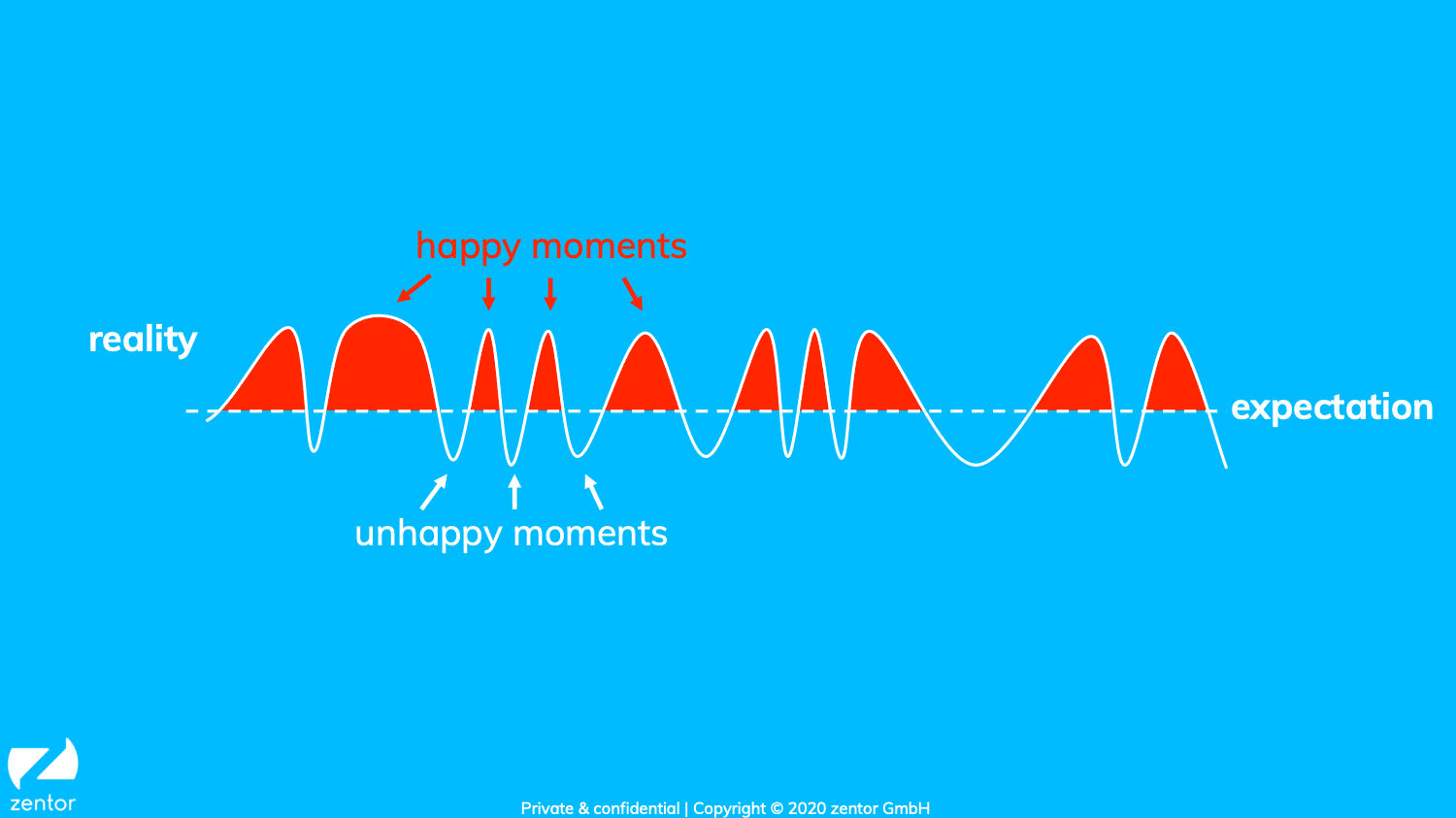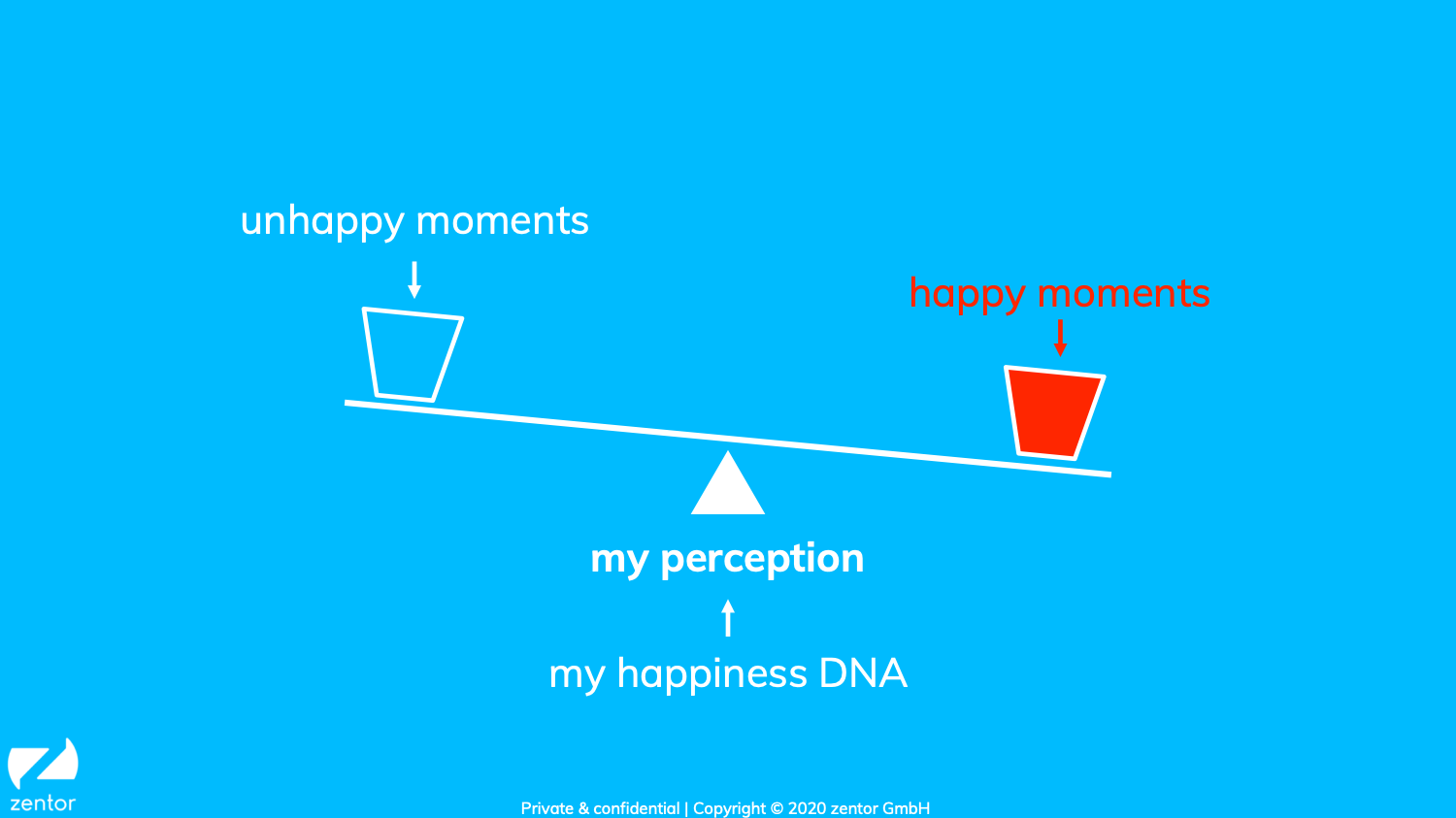An attempt to define happiness and a fulfilling life.
May I ask you a question? How do you know you are leading a fulfilling and happy life?
And I don’t mean the single ‘ingredients’ for it, like purpose, family, friends, leisure time, health, etc., but how exactly do you know that you are happy and fulfilled or just not satisfied.
Maybe you are thinking something like ‘I know it because I feel it’ or ‘because considering all things together it is going well – or maybe not.’ For most of us, fulfilment or happiness has something to do with an assessment or a feeling. But where exactly does this feeling come from?
Well, neuroscience would probably argue with activated brain areas or messenger substances such as dopamine and endorphins, but we here are more concerned about the psychological perspective. And according to this, we can simply distinguish two components
- A (physical) activation that is perceived quite roughly as ‘good’ or ‘bad ‘
- A (cognitive) evaluation of the present activation or past activations, i.e. an assessment of whether it means joy, happiness, fear, or anger
This immediately leads us to two exciting questions:
- Would somebody else in your situation feel the same?
- And if he or she does, would that person evaluate this feeling in the same way as you do?
Well, the answer is probably: It depends on the biology, the perception, the life experiences and the personality of the person. Each person like has something like an individual potential, something like a ‘happiness DNA‘, which influences how one experiences happiness and fulfillment in certain situations. So before one sets out in search of more fulfillment in life, one should understand one’s own happiness DNA.
Someone who has escaped from a region of war and feared for his life for years has other expectations than someone who has grown up in a safe home. And someone who is lying in bed sick with fever will probably evaluate his current situation differently from someone who is enjoying a refreshing smoothie on the beach on vacation.
From this example, besides an individual happiness DNA, two other factors emerge that control our feeling of happiness or fulfillment:
- Our ambition or rather our expectations
- Our perceived reality; and this can be both the actually experienced and a remembered reality
In these two factors lies the core of our definition of happiness, which can be presented as follows:

If we start with the usual ups and downs of our everyday life and experiences over time and assume we have certain expectations regarding our life. Then experiences above our expectation line represent moments that positively surprise us – what we call moments of joy or happiness. On the other hand, moments of unhappiness arise when our expectations or our implicit needs and demands are not met. Therefore according to our understanding, happiness is not a stable state, but manifests itself as joyful moments – which also makes sense neurologically, since such an emotion cannot be stable over a longer period of time.
So our definition of happiness is:
Moments of happiness arise when our expectations are met or exceeded by our experienced reality.
In our reality, moments follow one another over time, which – depending on our expectations – we experience as either happy or unhappy.
Of course this distinction between moments of happiness and unhappiness in life is a rough simplification. Because in fact we often experience moments, where we have no conscious expectation at all, and in which our subconscious needs, motives and demands come into play – aspects that we had previously introduced as happiness DNA. Our experienced reality is also often too complex to be evaluated as clearly above or below our expectations; there are only very few moments of pure happiness or pure unhappiness.
Therefore, when we are asked whether we live a fulfilling life, we will usually not just look at a special moment – but will reflect about a certain period of time and evaluate the moments of happiness or unhappiness we have experienced.
From this consideration results our definition of fulfillment:
A life is fulfilled when our balance between perceived moments of happiness and those of unhappiness is positive.
In simple terms, we lead a fulfilled life, when we feel that we experience more moments of happiness than of unhappiness. And surprisingly, we need both, the moments of happiness and unhappiness to be able to evaluate our fulfillment. This is less about the objective quantity of moments, but about the subjectively perceived quality. And not only can the same moment be perceived very differently by different people. Also the ratio of positive to negative experiences, at which we perceive a life as fulfilling is individually different. However, what we know from psychology is that a strongly negative experience cannot be emotionally balanced with only one equally strong positive experience.

From these two definitions three approaches to a fulfilled life can be derived.
- Creating opportunities for more moments of happiness
- More consciously managing our expectations and perceived reality
- Connecting our happiness DNA, experiences, expectations and perceptions together into a well integrated Self that creates a balance between the inner and outer world
All three strategies lead us to perceive more events in our lives that at least meet a minimum of our expectations. We experience those events as moments of happiness, because – if the balance to the moments of unhappiness swings into the positive – they contribute to a fulfilling life
Sources and suggestions for further reading:
- Seligman, M. (2017). Authentic Happiness: Using the New Positive Psychology to Realise Your Potential for Lasting Fulfilment. Nicholas Brealey Publishing.
- Gawdat, M. (2017). Die Formel für Glück: Und wie Sie diese nutzen. Redline Verlag.
- Kahneman, D., & Tversky, A. (1979). Prospect theory: An analysis of decision under risk. Econometrika, 47, 263-291. Econometrica, 47(2), 263–292. https://doi.org/10.2307/1914185
- Tversky, A., & Kahneman, D. (1992). Advances in Prospect Theory: Cumulative Representation of Uncertainty. Journal of Risk and Uncertainty, (5), 297–323.
- Tversky, A., & Kahneman, D. (1981). The framing of decisions and the psychology of choice. Science, 211(4481), 453–458.